In a recent podcast episode, James Ignatowich discusses his experience playing on the right side with Ben Johns at PPA Sacramento.
He says he learned a lot about playing that side – typically, he plays on the left in doubles – including how challenging it is for a right-side player to be aggressive on a ball that bounces in front of their inside (left) foot.
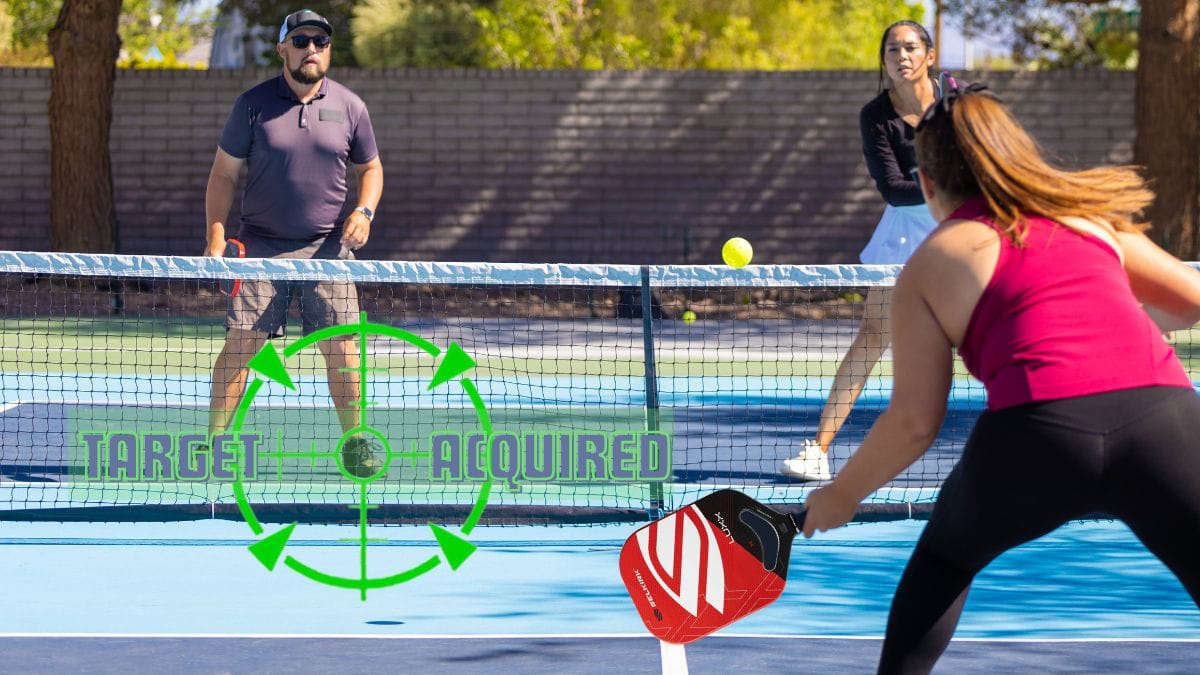
(The spot is highlighted in the above image)
The left foot of a right-handed player in this position is their backhand. When you make a ball bounce there, the player only has a few options of where to hit the next ball.
A speedup down the middle, off the bounce, is a bad shot choice because you’re hitting directly into your opponent’s forehand.
A cross-court dink is also risky because leaving this ball high and attackable is easy to do.
The only good option is hitting a dink to – you may have guessed it – the right-side player’s inside (left) foot.
In the video clip below, James Ignatowich makes the wrong choice, giving Riley Newman an opportunity to attack.
After Ben is pulled out wide, Gabe Tardio does a great job of hitting a dink out of the air (taking time away from Ben to get back) to James’ inside foot – a spot Ben usually covers with his forehand.
As a side note, this is one reason the left-side player should be allowed to take up more of the court in doubles.
While on his back heels, James tries to dink to the middle but leaves it up, and Riley Newman attacks it. James and Ben end up winning the rally, but that’s not the point.
James made the mistake because he didn’t know what to do with this particular ball — he all but admits this in his podcast episode.
And, if someone as great as James Ignatowich doesn’t know, you can bet that most players you play against don’t know either.
See the play unfold here:
(The point begins at the 10:54 mark)
How to use this strategy in your games
Hitting to this spot is almost always a positive choice. Not only is it a safe spot for you, it’s a troublesome spot for your opponent.
Also, it’s not just great for dinking. Hitting third- (or fifth-) shot drops and resets here is also a smart strategy.
Why this spot is safe for drops
This is a great spot for third or fifth-shot drops because it's harder for your opponent to hit an aggressive shot from their backhand in this position. Even if it's left up a little high, there's a great chance you'll get another opportunity to drop the ball again.
Third Shot Drop Crash Course
The third shot drop carries a lot of weight in the game of pickleball. It’s the key to neutralizing the returning team’s advantage and advancing towards the NVZ.
 The Dink PickleballThe Dink Media Team
The Dink PickleballThe Dink Media Team
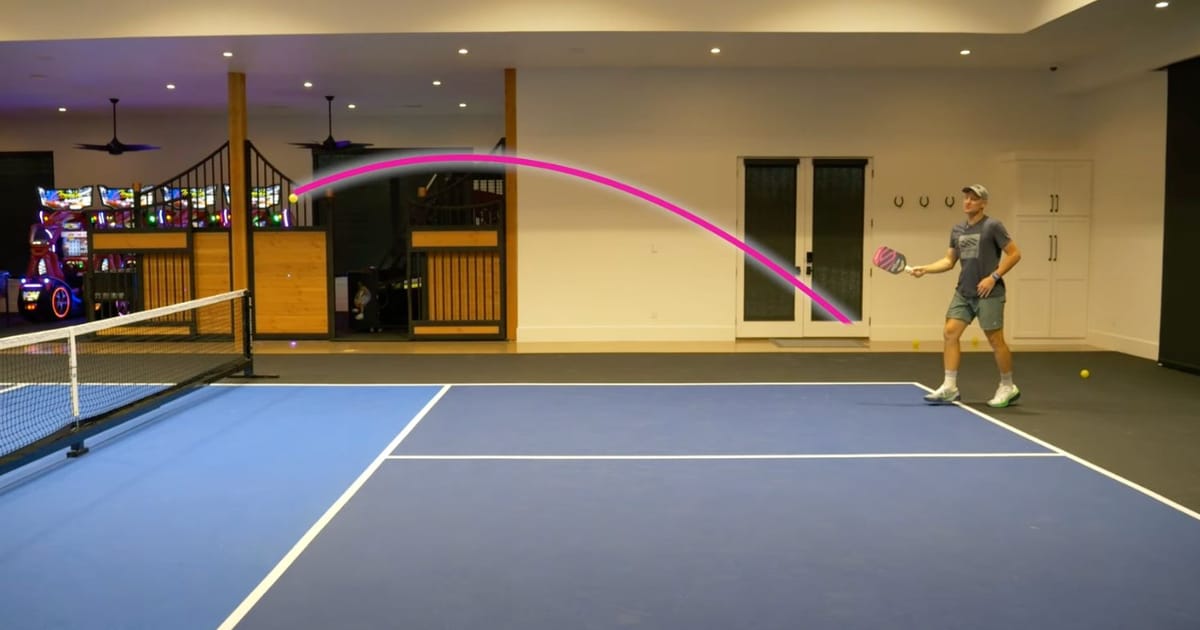
This spot also ensures that you're not aiming too close to the sideline, where your opponent can try an Erne.
There is plenty of margin for error in dropping the ball repeatedly in this spot. It's similar to a golfer aiming their approach shot away from the hazard. If you miss, it's not going to hurt you too badly.
Why it's safe for resets
Hitting good resets on your approach to the kitchen is often what separates high-level players from low-level ones. A player may often think about the height of a reset shot, but considering where to place it is also very important.
Five Keys to Executing a Perfect Midcourt Reset
One of the most important and difficult shots in pickleball is resetting the ball from the midcourt. Our resident pro Eric Roddy shares some tips and techniques to mastering the crucial shot.
 The Dink PickleballEric Roddy
The Dink PickleballEric Roddy
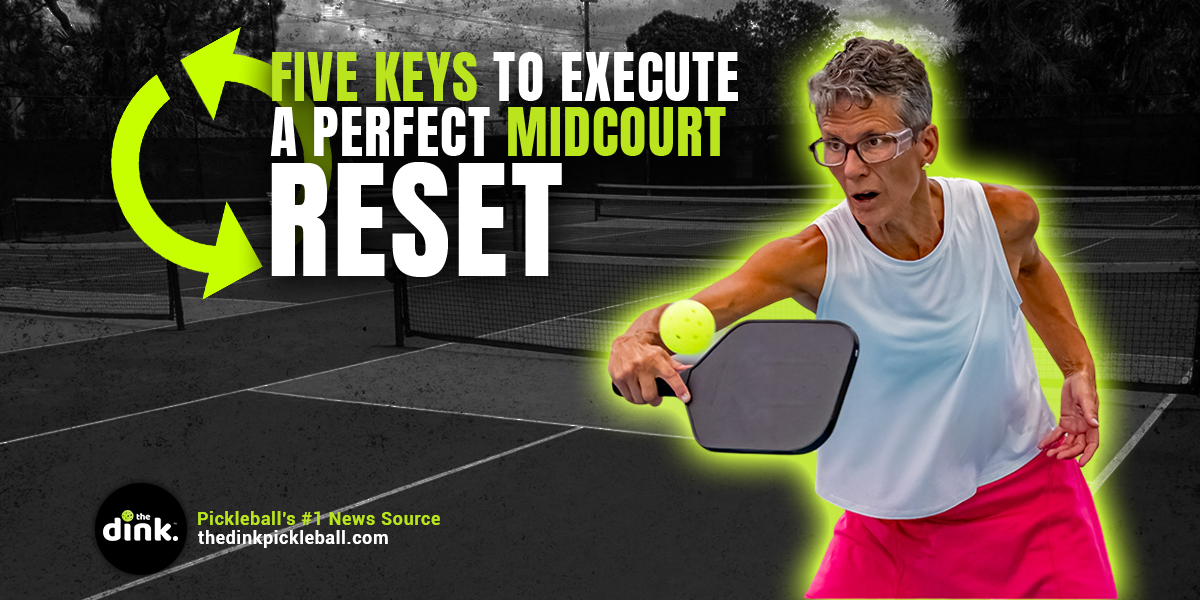
Again, there is more margin for error in aiming your reset at the right-side player's inside (left) foot than if you try to reset the ball to their forehand side or the corner of the kitchen.
Getting through transition is all about risk management, and this spot might be the safest spot on the entire pickleball court.
If you spent the entire game aiming shots at the right-side player’s left foot, you would create fewer attacking opportunities for your opponents and more for you and your teammate.
A word of warning
However, there is one crucial caveat.
This strategy will not work against lefthanders (assuming they are playing on the right side) because instead of this being their backhand, it’s their forehand, and they can attack from there.
Winning Strategies and Benefits for Lefty-Righty Doubles Partners
What makes a lefty-righty partnership so special and what are some strategies for taking advantage of it?
 The Dink PickleballJason Flamm
The Dink PickleballJason Flamm
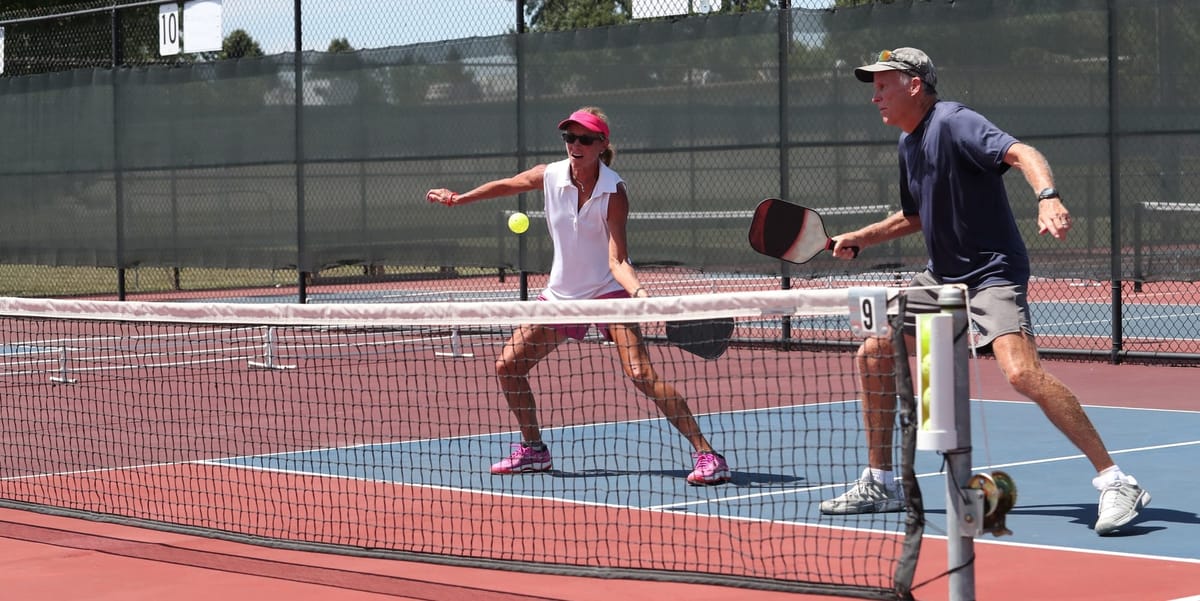
When playing against a lefty, you may want to aim more toward the sideline since the only Erne threat for both players is their backhand – and that's a much harder shot to execute consistently.
Pickleball Skill Quiz
Find out your pickleball rating
 Pickleball Skill Quiz
Pickleball Skill Quiz
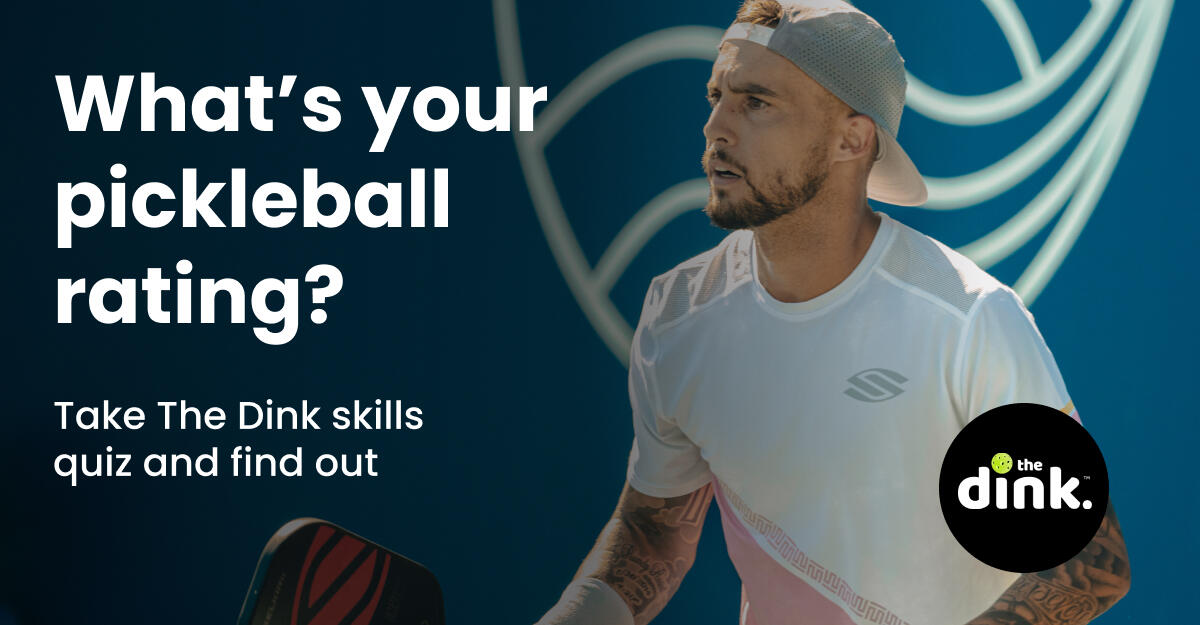
Anuncie Aqui / Advertise Here
Sua marca para o mundo Pickleball! / Your brand for the Pickleball world!

 English
English  Spanish
Spanish  Portuguese
Portuguese  German
German  Italian
Italian  Japanese
Japanese  French
French  Polish
Polish  Russian
Russian  Netherlands
Netherlands  Hungarian
Hungarian  Turkish
Turkish  Videos
Videos 

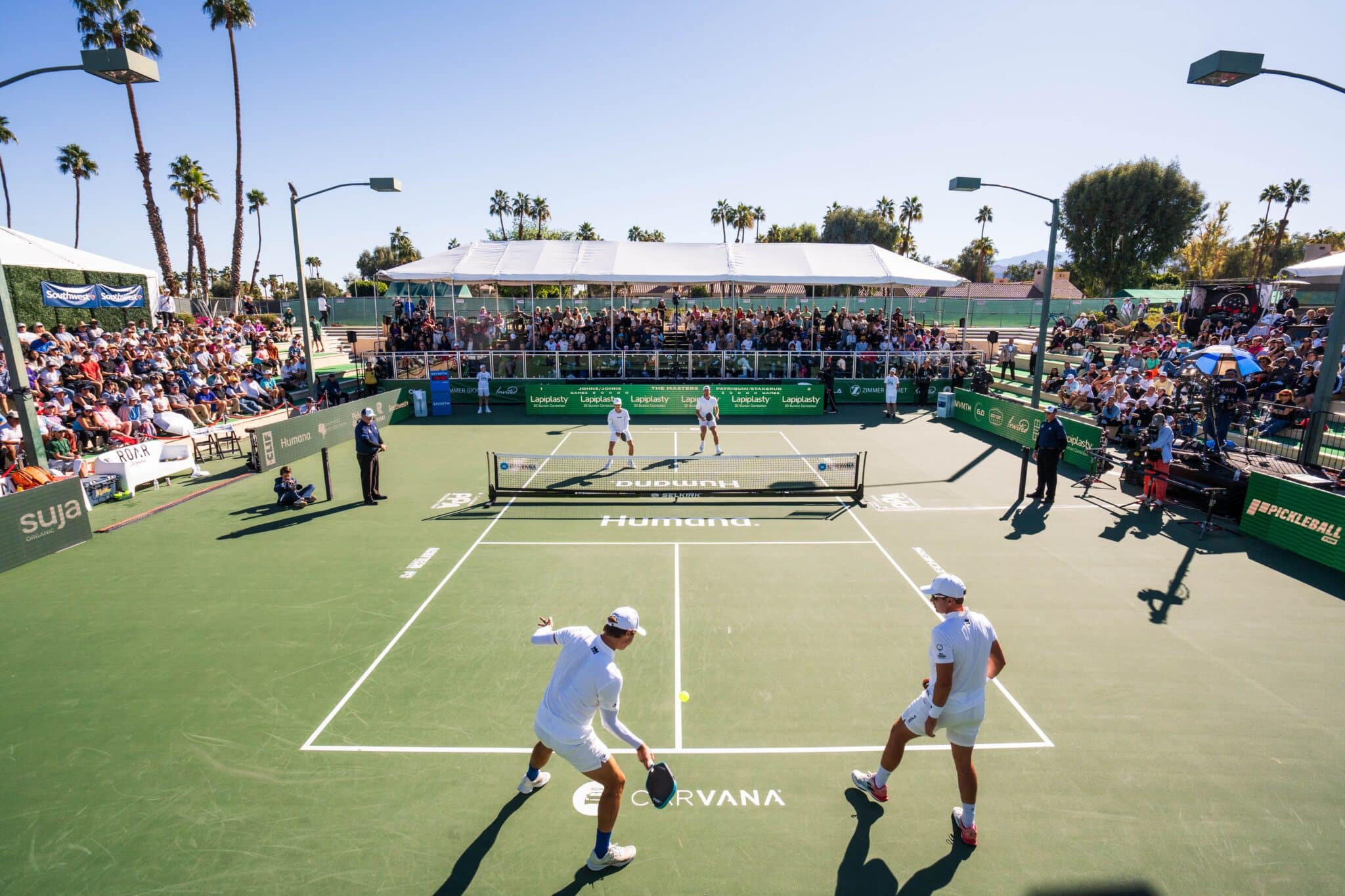
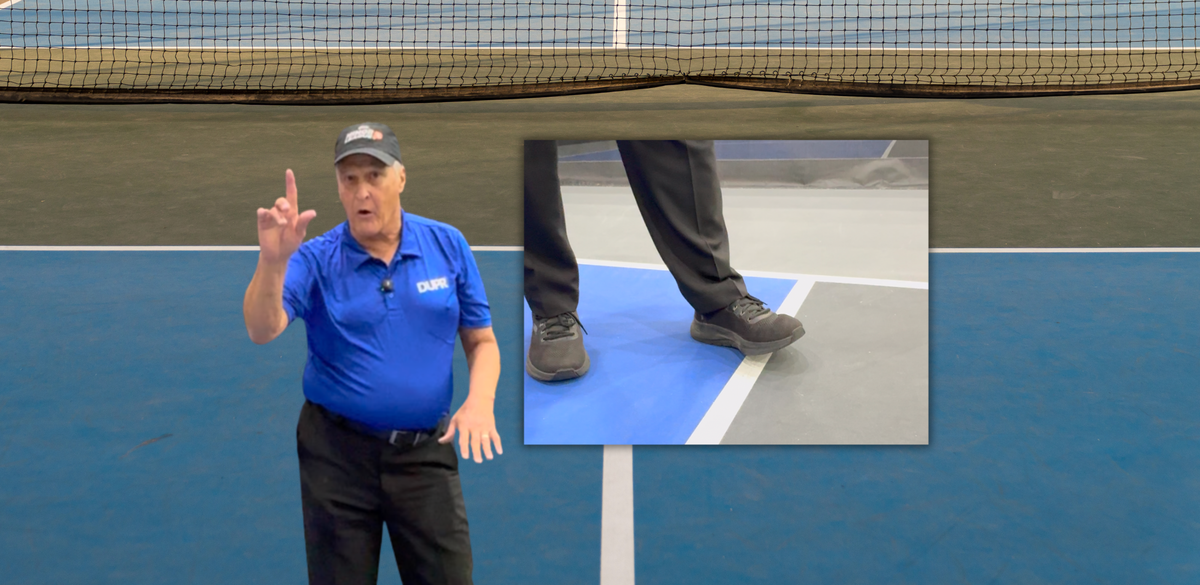
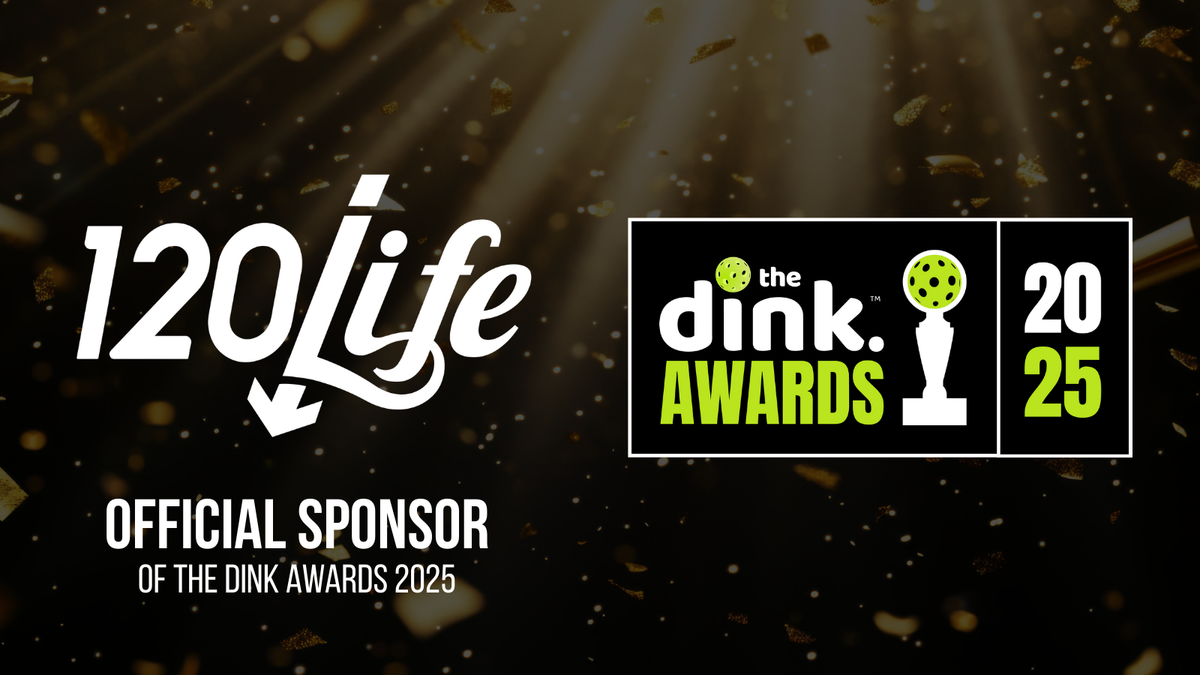




 English (US) ·
English (US) ·  Portuguese (BR) ·
Portuguese (BR) ·